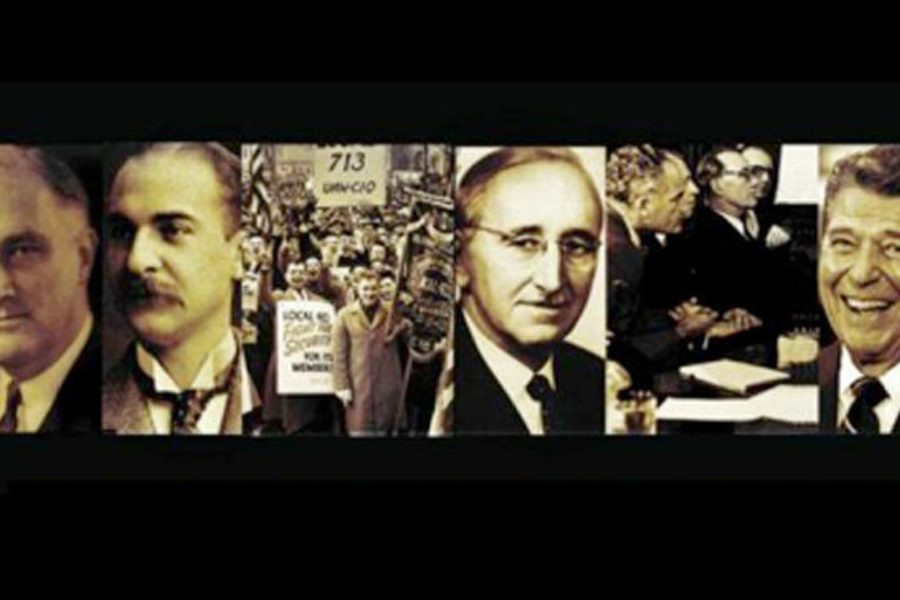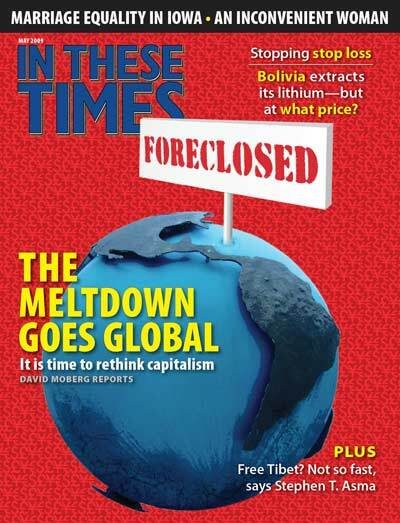Old War on New Deal
The new book Invisible Hands reveals how quickly conservatives organized to challenge New Deal liberalism.
Alexander Gourse

Academic historians tend to write about modern U.S. political history as a “great unraveling.” The Great Depression, the story goes, created opportunities for proponents of social democracy in the United States. FDR’s New Deal – which grassroots social movements pushed to the left – established the basic contours of a national welfare and regulatory state, and in the process solidified a political coalition around the “security” for working- and middle-class Americans.
Yet this program contained the seeds of its own demise. Pervasive racism and anti-communist paranoia among the Democratic Party’s core constituency allowed Republicans to lure white working-class voters – gradually at first, then rapidly after 1964 – away from the so-called liberal consensus of the postwar era.
This narrative has enjoyed remarkable staying power. Where conservatives enter the story, it is usually as race-baiting opportunists who exploited pre-existing racial tensions for their own electoral benefit. Yet American conservatism has always been more than simply a politics of backlash.
In her new book Invisible Hands: The Making of the Conservative Movement from the New Deal to Reagan (Norton, January), New York University historian Kim Phillips-Fein offers a counter-narrative that focuses on “those determined few” – businessmen and libertarian intellectuals – who dreamed about repealing New Deal liberalism from its conception.
Rather than an “unraveling,” hers is a timely account of the triumph of a movement that never disappeared from American politics.
Leaders of big business began their assault on liberalism when the New Deal was barely a year old. In 1934, the du Pont brothers founded the American Liberty League to wage a public relations campaign against FDR. When their strategy failed – Roosevelt trounced Kansas Gov. Alf Landon in the 1936 elections, in part by pointing to the league’s support for Republicans as evidence of an elite plot against the public welfare – the du Ponts challenged New Deal legislation through the courts.
“Even at its zenith,” Phillips-Fein writes, “liberalism was far less secure than it appeared to be.”
Although liberalism was embattled from the start, its early opponents had little hope of returning to a time when businessmen were the heroes of American politics.
But in 1944, a young Austrian economist named Friedrich von Hayek transformed conservatism from a muddled political philosophy into “a defense of the free market [that used] the language of freedom and revolutionary change,” writes Phillips-Fein.
While some business leaders adapted to the Keynesian policies that drove postwar economic growth, many others latched on to Hayek’s ideas about the connection between markets and individual freedom. The first free-market think tank, the Foundation for Economic Education, was founded in 1946 with the financial support of the National Association of Manufacturers and the U.S. Chamber of Commerce.
In subsequent decades, business leaders experimented with ways of implementing free-market ideology. Corporations, such as General Electric, hoping to convince workers not to join unions, invested in new management techniques that entrenched “market culture” within the workplace.
When government agencies like the National Labor Relations Board got in the way of such attempts at ideological engineering, companies funneled money toward upstart conservative politicians who promised to rein in federal protections for organized labor. When legislators began passing new environmental and consumer safety regulations in the ’70s, business leaders underwrote economic research that pointed to regulation as an impediment to growth and invested in a legal strategy that they hoped would preserve their “rights” against arbitrary state authority.
Whatever the means by which businessmen put free-market ideology into practice, they were fantastically successful. “The mundane yet powerful presence of business” in late-20th century culture, Phillips-Fein argues, signifies “the fulfillment … of the long-ago vision of the Liberty League.”
The world of industrial tycoons makes for a compelling historical read, and the timing of the book’s release couldn’t be better. With the current financial crisis pushing culture warriors to the margins of political discourse, Phillips-Fein should find an unusually receptive audience to a book about scheming business elites.
Yet the nature of her subjects also lends itself to conspiratorial overtones. One can’t help but conjure images of smoke-filled rooms where malevolent capitalists plot against the working class. Phillips-Fein makes a feeble (albeit commendable) effort to discourage such a cartoonish reading of history, but without a broader picture of the people and ideas that generated the conservative movement, such a disclaimer would likely fall on deaf ears.
Minor shortcomings aside, Invisible Hands refocuses our attention on the debates over political economy that make up the core of American politics. In our own transformative political and economic moment, Phillips-Fein provides a reminder of the influence that powerful individuals can wield over the national debate.







